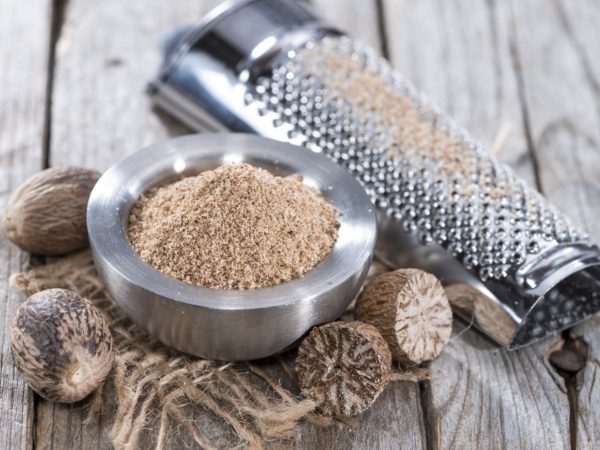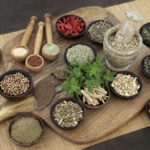Cooking With Spices: Nutmeg

Nutmeg is the seed of the nutmeg tree (Myristica fragrans), an evergreen native to the Bandas Island in the Moluccas, or Spice Islands, of Indonesia. The deep, warm depth of nutmeg spice made it immediately popular when it was introduced to southern Europe in the sixth century, spreading throughout the continent over the next 500 years. By the 1800s, nutmeg was being produced in the West Indies, Grenada and Trinidad for export worldwide.
The nutmeg seed is egg-shaped, about the size of a small walnut, and covered in a lacy red covering called mace, which is another spice. It takes at least seven years for the nutmeg tree to produce both spices.
Historically, nutmeg has been used orally to address digestive concerns such as flatulence, nausea and diarrhea. It has also been used to treat bad breath, fever, headaches, insomnia, even as an aphrodisiac. Topically, nutmeg was used as an analgesic to treat mouth sores and toothache. However, more research is needed to establish reliable information about the safety, efficacy, and the health benefits of nutmeg for all of these applications.
Women who are pregnant or lactating should avoid using nutmeg orally in medicinal amounts, as it may act as an abortifacient.
Nutmeg has proven to have antioxidant properties, and in a small study, looked to offer protective effects for the liver and testicles against radiation therapy. It also may cause psychoactive effects such as hallucinations – often described as unpleasant – when taken in extremely high doses (one to three whole seeds).
As a culinary spice, nutmeg is pungent and sweet, and a small amount goes a long way. It is often associated with winter holidays and is used in baked goods, eggnogs and winter puddings. In the Netherlands and Italy, where it is a popular spice for savory dishes, it is added to vegetables, sausages, meat and preserves.
Whether in whole seed or powdered form, keep it in a tightly sealed jar away from light and heat. Whole seed can last up to four years; powdered spice for one. Whole seeds offer a fresher flavor, but require a fine grater to create tiny shavings for cooking.
Dr. Weil’s take:
I always keep a nutmeg seed and a fine grating rasp in my kitchen. Nutmeg is not just for holiday drinks or baked desserts; it can add a deep, complex, nutty flavor to a wide variety of foods. Try it on raw fruits: grate fresh nutmeg onto fresh apples, pears, pineapple slices, or even add a pinch to fruit salads. Add a squeeze of fresh lemon for even more punch.
Grated nutmeg works well on vegetables too; try it on roasted potatoes, pumpkin, steamed cabbage and all types of squash. I love it as a crucial spice to make Brussels sprouts taste amazing. It also pairs well with foods cooked in coconut oil.
More information on nutmeg:
- Getting High on Nutmeg?
- Recipe: Potato Gnocchi
- Recipe: Layered Fritatta With Leeks, Swiss Chard, Tomatoes
- Rceiped: Hashed Brussels Sprouts










